A treasured (and tattered) ’67 Jazzmaster, a dismembered doubleneck, a double-dose of stereo Jazz Chorus, and a surprisingly simple stomp station colors the celebration of the 20th anniversary of Yoshimi Battles the Pink Robots—and the rest of Wayne Coyne’s twisted Willy Wonka-esque adventures.
Over the last four decades, the courageous and creative Flaming Lips have put out 16 studio albums. Their genre is an alphabet soup that ranges from acid rock and ambient to zany psychedelia, all while pumping on a pop heartbeat. They’ve won three Grammys, written and filmed an alien colonization movie and soundtrack (Christmas on Mars), reimagined Dark Side of the Moon with Henry Rollins, had their hit “Do You Realize??” named the official rock song of Oklahoma, and of course, performed in bubbles before and during the pandemic.
As members of one of rock’s most adventurous bands, founding frontman Wayne Coyne and his longtime collaborator, multi-instrumentalist Steven Drozd (who originally joined the band in 1991 as a drummer), have tried almost everything, including transforming their sensitive-smash album, Yoshimi Battles the Pink Robots, into a Broadway musical. And Yoshimi was back in the spotlight this spring as the Lips toured for its (delayed) 20th anniversary, playing it front to back for their show dates later in the season.
Before the band delighted a sold-out crowd at the Ryman Auditorium with Yoshimi and 11 other of their greatest hits, Drozd invited PG’s Chris Kies onstage to catalog his bizarre-yet-basic setup. Steven details the origins and deterioration of his 1967 Fender Jazzmaster (and why there’s a Hot Rails in the bridge), explains the superficial reason why his doubleneck only has one fretboard, and shows off a pedalboard that’s probably smaller than yours.
Brought to you by D’Addario XPND Pedalboard
1967 in Heaven
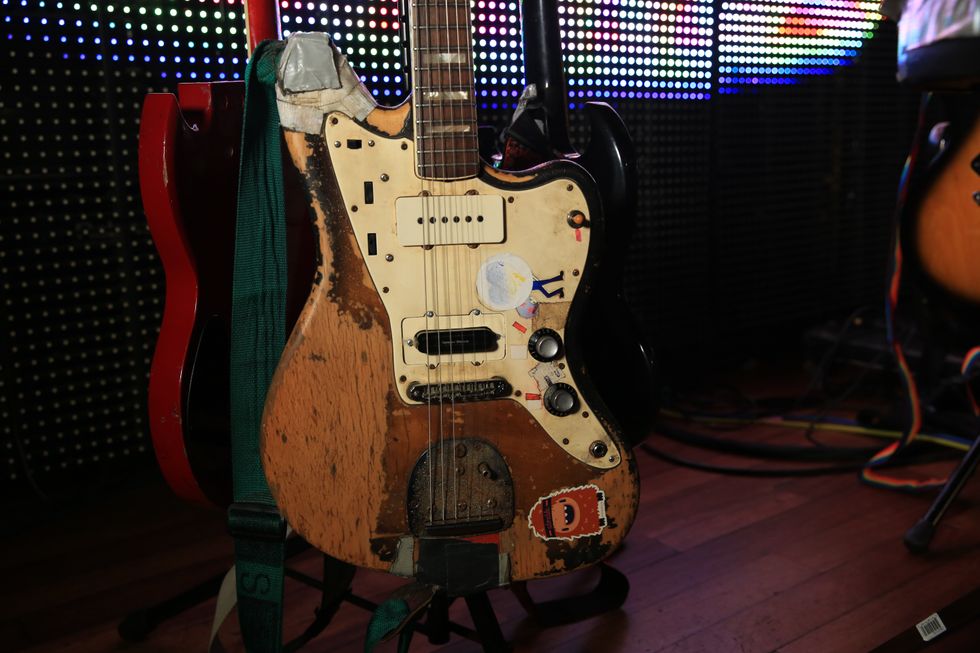
If you’ve seen the Flaming Lips over the last 30 years, you’ve witnessed this guitar slung over either the shoulder of Coyne or Drozd. Steven purchased it during the summer of 1992 from Horn Trader Music in Oklahoma City. What was the price tag? $700!
He talked to PG in 2010 about the experience of meeting the guitar: “[Horn Trader] sold all this vintage gear, and the moment I walked in the store, that ’67 Jazzmaster just called to me. It’s weird to say, but there are times when you walk into a store and it just hits you—that urge or voice that says, ‘This is the one.’ Just to make sure I wasn’t nuts, I picked it up and played it for a minute, and all that did was confirm my subconscious urge. It is just one of those guitars that anyone who picked it up would comment on the neck and just how easy it is to play.”
Shortly after the purchase, he took it over to Wayne’s house and left it there. When he returned to reclaim his offset, there was a big surprise for him.
“I was still the drummer when I bought that guitar, so I had left it over at Wayne’s for a few days and he tinkered with it. I think he got the idea he was going to use it for touring, so he dropped a Seymour Duncan Hot Rails in it. I came over later and I was pissed because I had this idea of keeping it original and pristine. But the fact of the matter is that the Hot Rails were a saving grace. The original setup with JM pickups would have just howled with all of our fuzz boxes.”
Long ago the Jazzmaster’s rhythm circuit was removed. It takes .010–.046 strings and stays in standard tuning. All of his guitars share a single Sondery Wireless Guitar Transmitter Receiver System.
Rust Never Sleeps
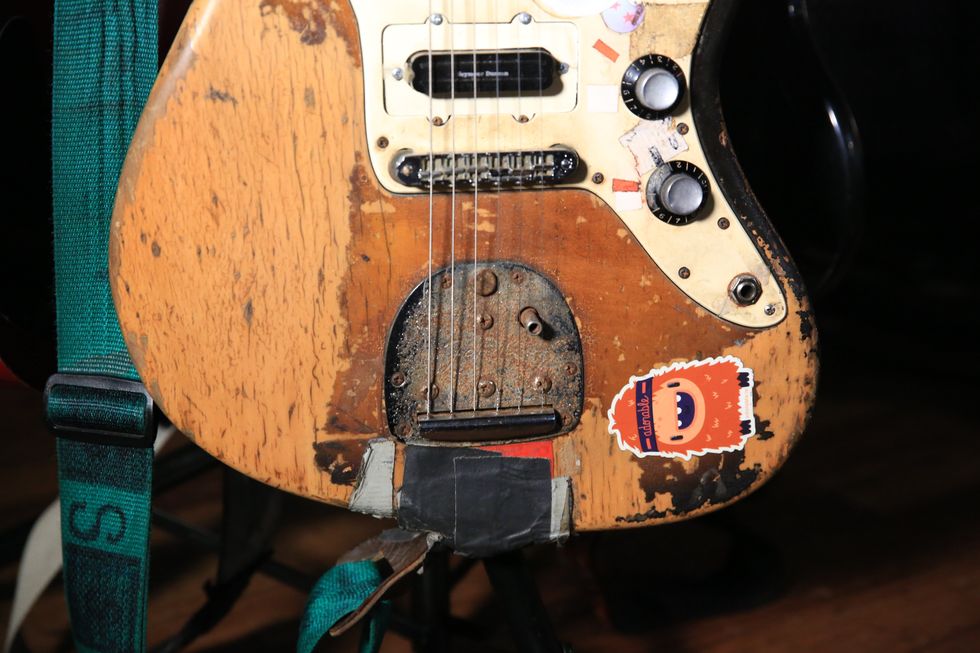
A close-up proves that the ’67 has been a part of every Flaming Lips show since 1994.
Double Made Single
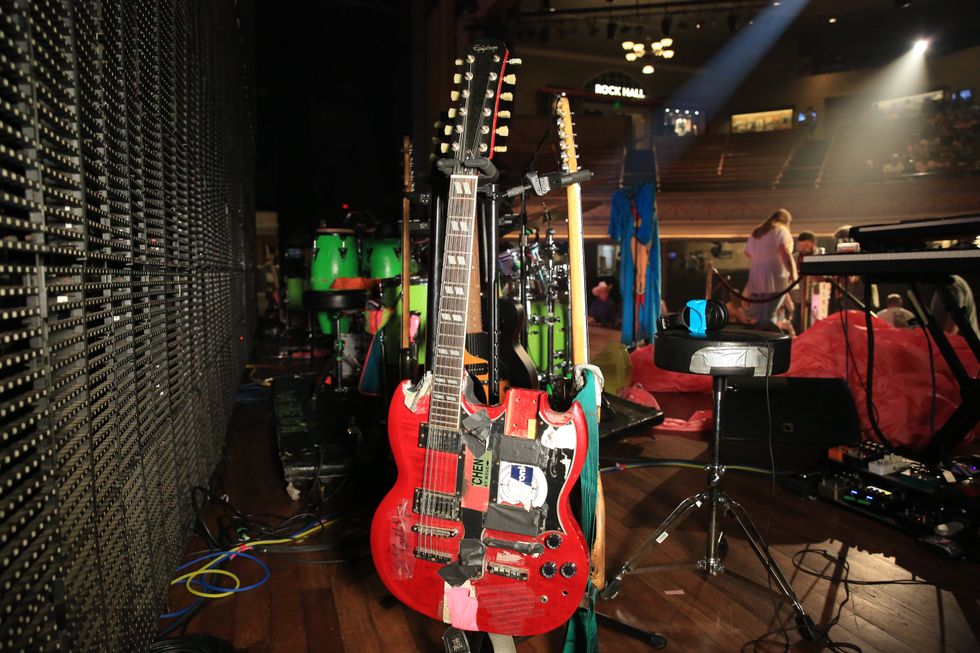
Drozd believes this is an Epiphone G-1275 Double-Neck guitar, but if you look closely, the truss rod cover reads “Gibson,” just like the neck plate. He removed the bottom 6-string neck for a repair, and both he and Coyne agreed that the guitar looked way cooler with just the single 12-string neck on the doubleneck body. Another peculiar thing is that Drozd only puts 11 strings on it (losing the second G string) to prepare it for a particular song—where he uses the doubleneck with a Line 6 FM4’s Octisynth setting—because having only one string for a specific note of the scale allows the pedal to track clearer.
Sign Me Up
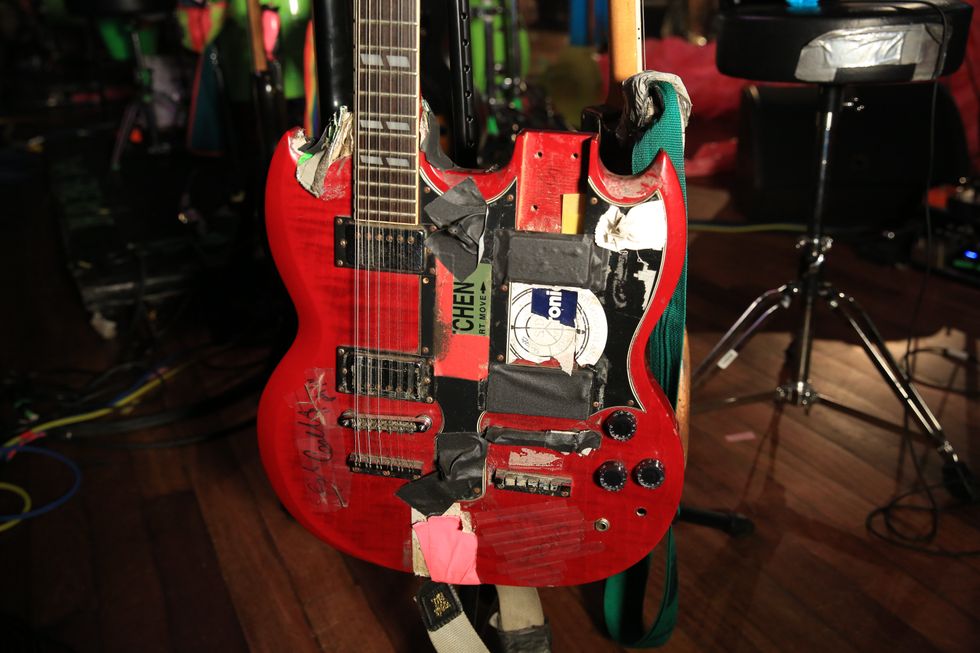
A zoomed-in shot of the G-1275 reveals a pair of signatures from Stephen Colbert and Mick Jones.
The Only New One
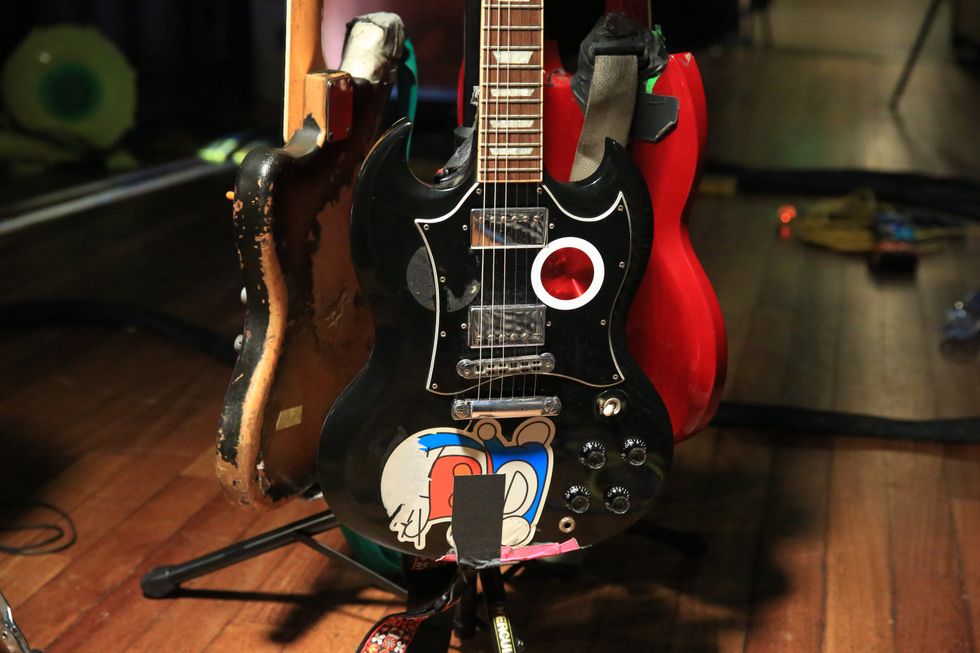
During his 2010 interview with PG, Drozd mentioned that he had never bought a brand-new instrument. He still hasn’t, with the exception of this 2011 Gibson SG Standard he bought the following year in Oklahoma City. It splits stage time with the Jazzmaster during the Yoshimi set. The new kid on the block takes .009–.042 strings.
Rolan' on a River
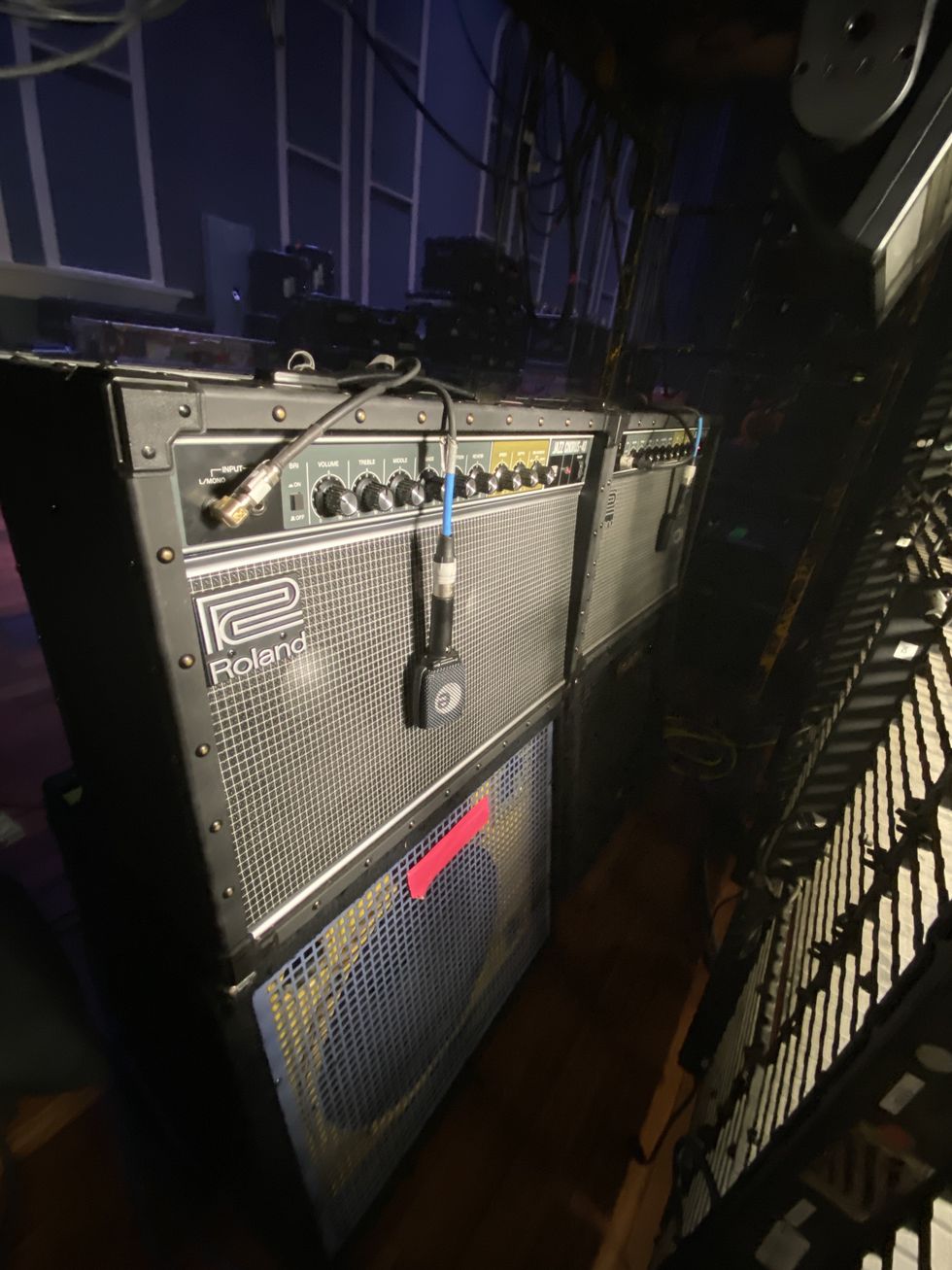
Drozd had been a user of Roland JC-120 Jazz Chorus combos since the mid 2000s, but has since downsized to the compact JC-40 models using a pair in stereo. He doesn’t use the reverb or modulation circuits, and instead relies on just the clean tone, opting to color his tone with pedals.
Steven Drozd's Pedalboard
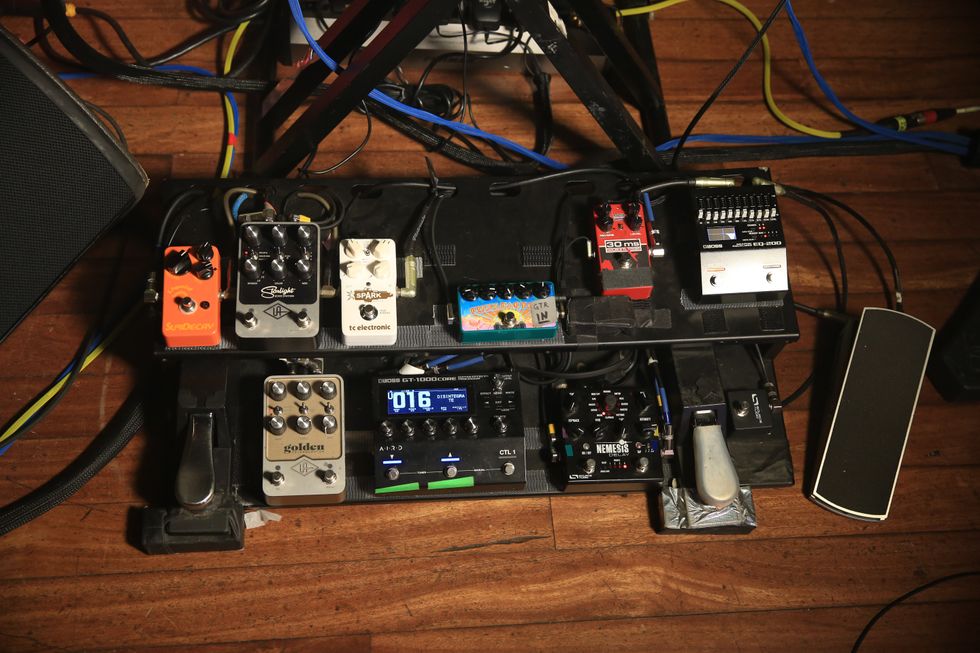
Given the nature of the band’s expansive and deranged sounds, you wouldn’t be blamed if you thought Drozd would have a rack of pedals or three tethered boards. But you’d be wrong—as he’s currently touring with nine stomps and an Ernie Ball volume pedal. Doing a lot of the heavy lifting is the Boss GT-1000CORE. The other sonic scalpels and sizzlers are a Subdecay Liquid Sunshine, a duo of Universal Audio units—a Starlight Echo Station delay and Golden Reverberator—a TC Electronic Spark, a ZVEX Fuzz Factory, a Source Audio Nemesis Delay, a Keeley Electronics 30ms Automatic Double Tracker, and a Boss EQ-200 Graphic Equalizer.





![Rig Rundown: AFI [2025]](https://www.premierguitar.com/media-library/youtube.jpg?id=62064741&width=1245&height=700&quality=70&coordinates=0%2C0%2C0%2C0)

















![Devon Eisenbarger [Katy Perry] Rig Rundown](https://www.premierguitar.com/media-library/youtube.jpg?id=61774583&width=1245&height=700&quality=70&coordinates=0%2C0%2C0%2C0)


















































